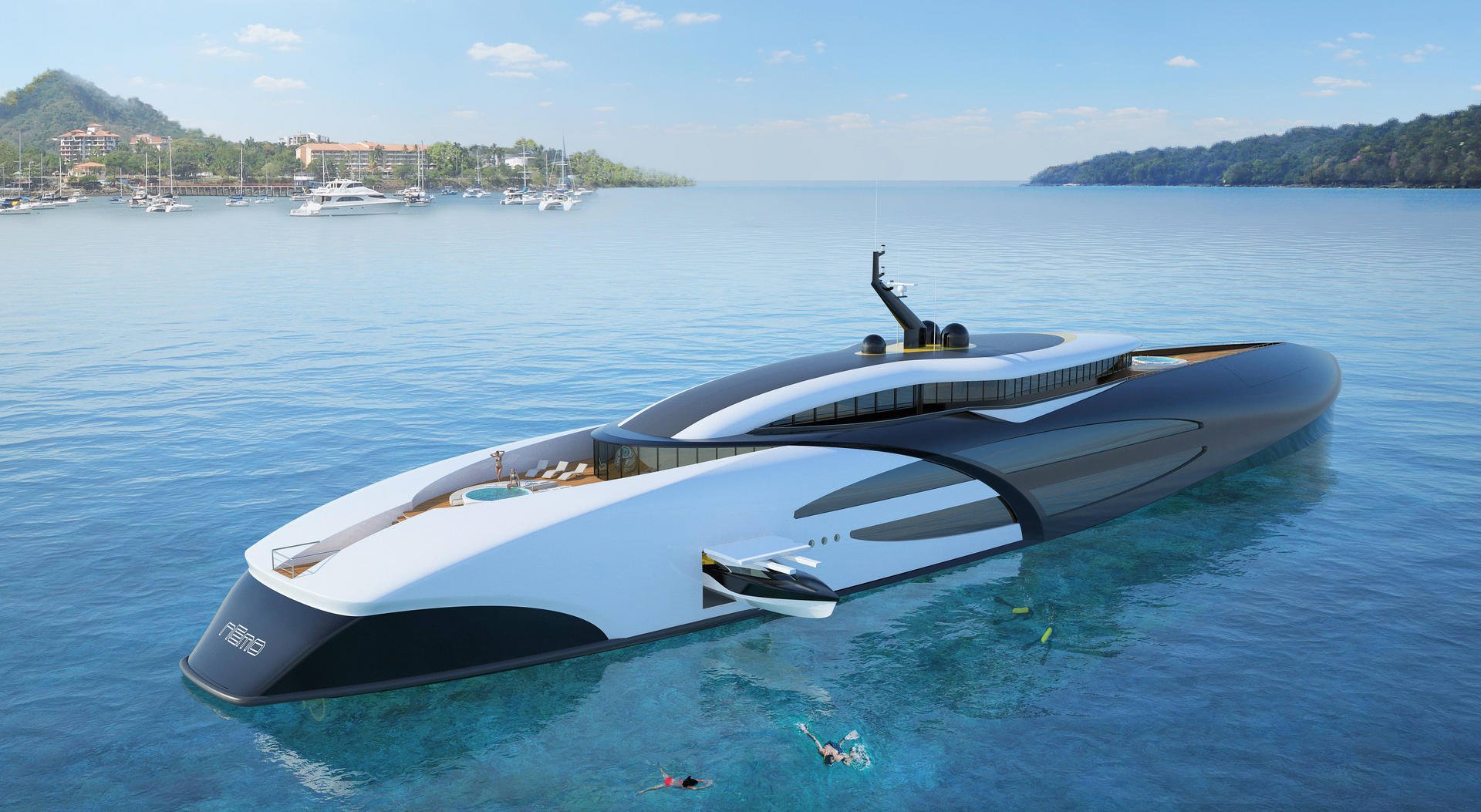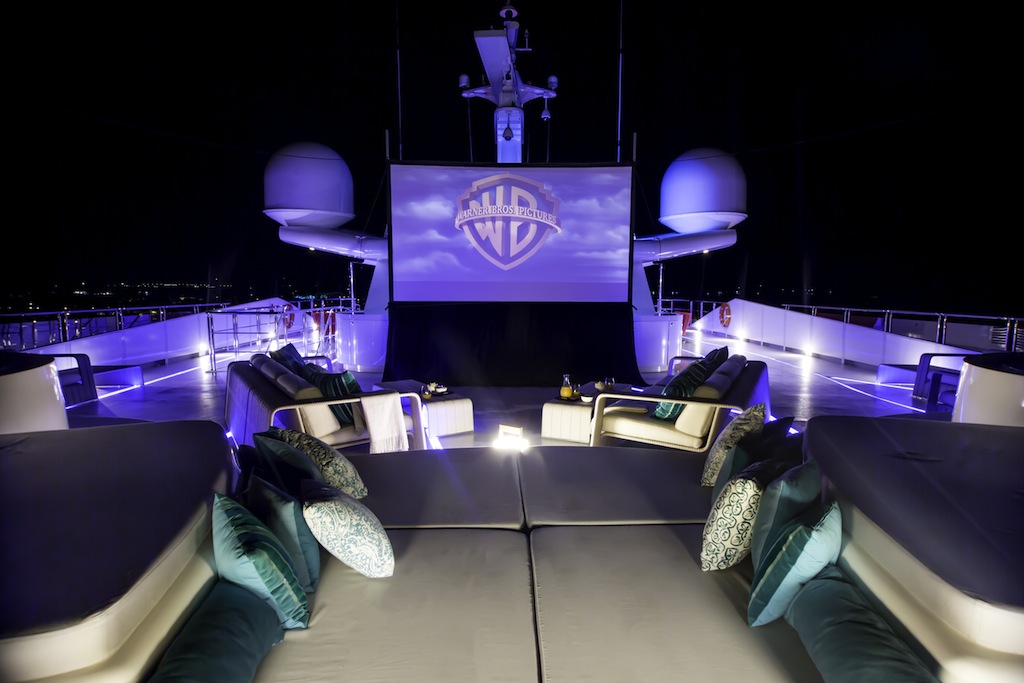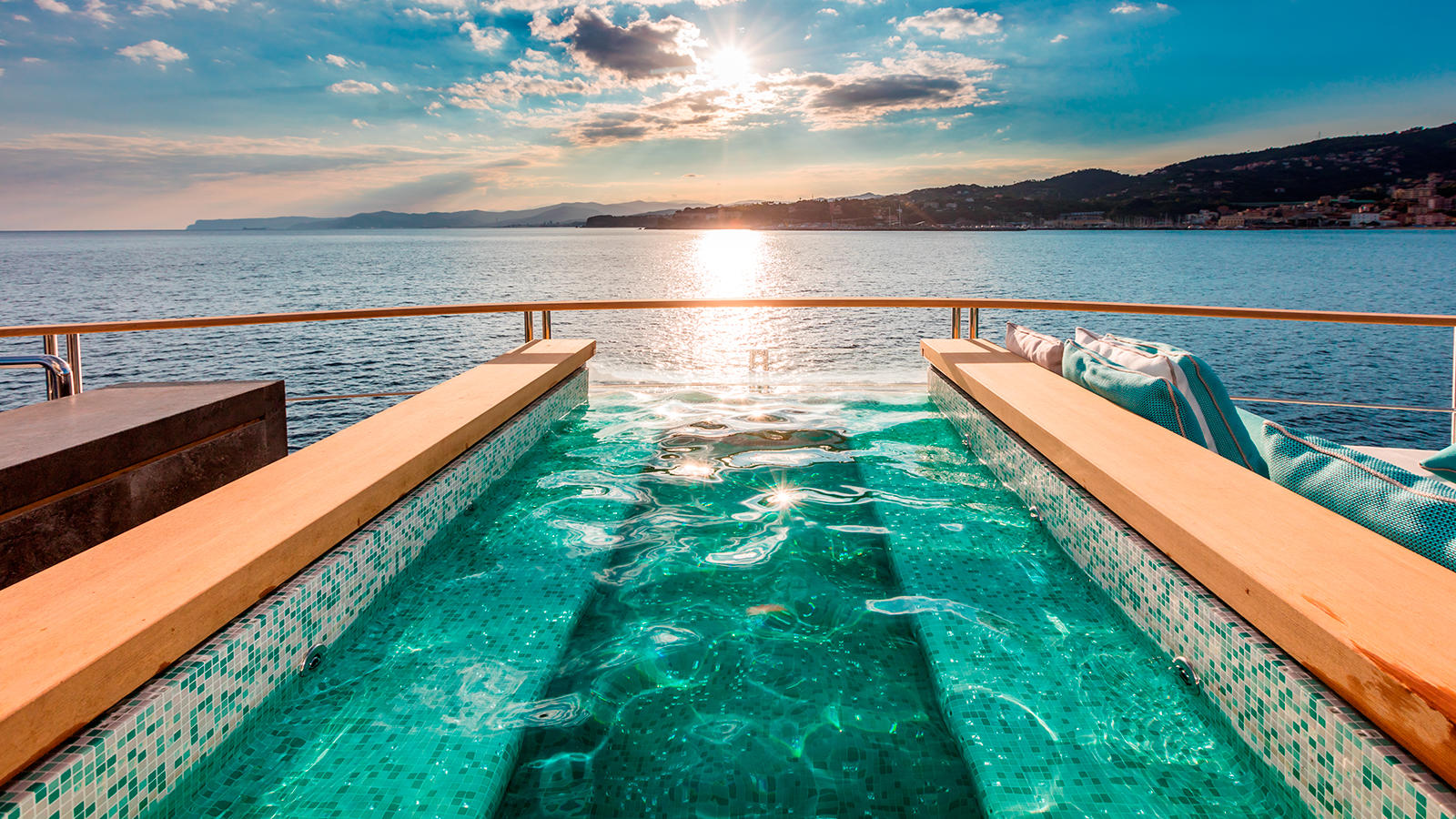Imagine cruising on the pristine waters of the Mediterranean, surrounded by luxury and opulence on a magnificent super yacht. As you bask in the sunlight and savor the elegant ambiance, you can’t help but wonder about the security and privacy measures that are in place to protect you and your fellow passengers. In this article, we will delve into the world of high-tech security and privacy on super yachts, exploring the innovative technologies and procedures that ensure the safety and confidentiality of those fortunate enough to experience this unparalleled level of luxury. So sit back, relax, and prepare to be amazed as we uncover the secrets behind these floating fortresses. When it comes to ensuring the safety and privacy of those on board a super yacht, there are a multitude of high-tech security measures in place. These measures are designed to protect against various threats, both physical and virtual. In this article, we will explore the different security and privacy measures that are commonly found on super yachts, including surveillance cameras, intrusion detection systems, access control systems, alarm systems, onboard security personnel, cybersecurity measures, biometric authentication, safe rooms and panic buttons, tracking systems, secure communication, fire suppression systems, and privacy measures.

This image is property of www.scmp.com.
Securing the Perimeter
Surveillance Cameras
Surveillance cameras are an integral part of enhancing security on a super yacht. These cameras are strategically placed throughout the vessel, allowing for real-time monitoring and recording of activities. They serve as a deterrent to potential intruders and can also help in investigation and evidence gathering in case of any security incidents. With the advancement in technology, surveillance cameras now come with features such as high definition video quality, night vision, and remote access for live viewing through mobile devices.
Intrusion Detection Systems
Intrusion detection systems are designed to detect any unauthorized entry or access to a super yacht. These systems utilize various sensors and detectors to monitor doors, windows, hatches, and other entry points. In the event of a breach, the system will trigger an alarm, notifying the crew or security personnel on board. Intrusion detection systems can be customized with different security zones and can be integrated with other security components, such as surveillance cameras and access control systems, for a comprehensive security approach.
Perimeter Fencing
Perimeter fencing provides an additional layer of security for the super yacht. It acts as a physical barrier, preventing unauthorized access from the water or nearby land. The fencing is typically made of durable materials that are resistant to corrosion and tampering. In some cases, the fencing may also incorporate sensor-based alarm systems to detect any attempts to breach the perimeter.
Access Control Systems
Access control systems are essential for managing and monitoring who can enter different areas of the super yacht. These systems use various methods of authentication, including keycards, PIN codes, or biometric data, to verify the identity of individuals. Access control systems can be programmed to restrict access to different levels of the vessel, ensuring that only authorized personnel can enter sensitive areas. They also provide an audit trail of access activity, allowing for easy tracking and accountability.
Alarm Systems
Intruder Alarms
Intruder alarms are designed to detect any unauthorized entry or suspicious activity on board a super yacht. These alarms typically consist of motion sensors, window sensors, and door sensors. When triggered, the alarm system will activate loud sirens and strobe lights, alerting the crew or security personnel on board, as well as potentially deterring the intruders. Some modern intruder alarm systems can also send real-time notifications to the owner or captain’s mobile devices, providing them with immediate information about the security breach.
Fire Alarms
Fire accidents can be devastating, especially on a super yacht. Fire alarms are essential for early detection of smoke or fire, allowing for a quick response and evacuation if necessary. These alarms are usually connected to smoke and heat detectors placed throughout the vessel. Upon the detection of smoke or an increase in temperature, the fire alarm will sound, alerting the crew and passengers to the potential danger. Additionally, the modern fire alarm systems can be integrated with sprinkler systems and fire suppression systems to minimize the spread of fire and provide a swift response to such emergencies.
Motion Sensors
Motion sensors are an important component of alarm systems on super yachts. These sensors can detect any movement or activity in specific areas and trigger an alarm if unauthorized motion is identified. Motion sensors can be placed in key locations, such as hallways, entrances, or even the deck. They are designed to be highly sensitive and can differentiate between natural movements, such as waves, and potential intruders. The activation of motion sensors can activate other security measures, such as surveillance cameras or alarm systems, for a comprehensive security response.
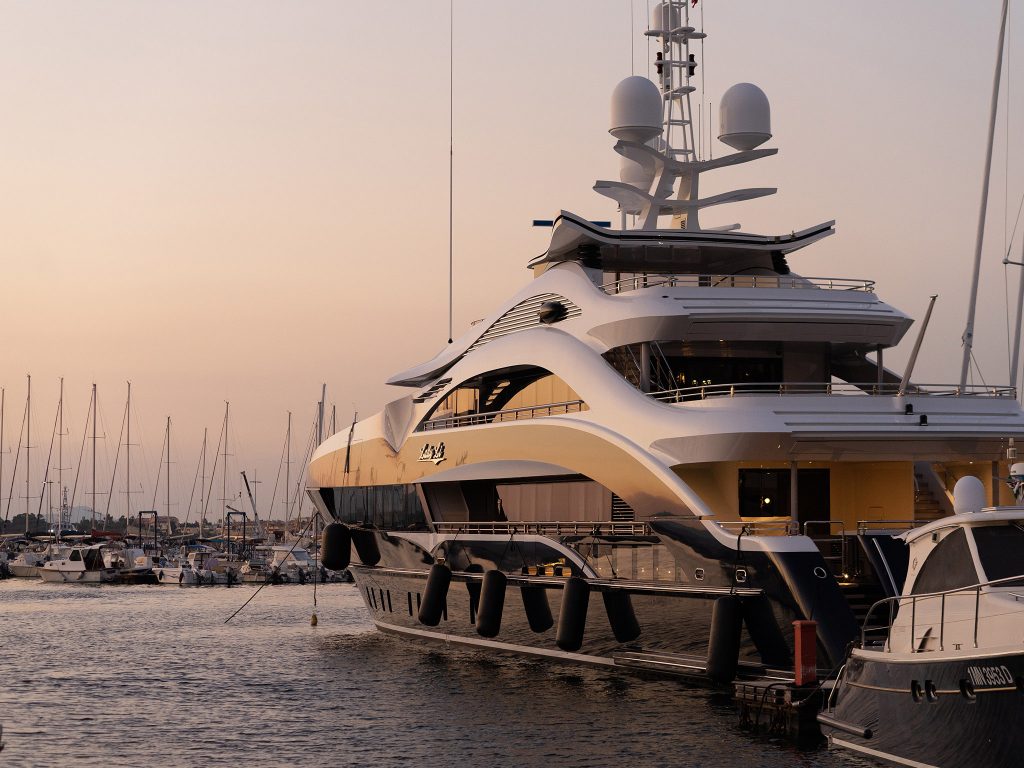
This image is property of customsecuritydoors.com.
Onboard Security Personnel
Bodyguards
In order to ensure the safety of high-profile individuals or VIP guests, super yachts often employ skilled and experienced bodyguards. These individuals are specially trained in personal security and close protection. They are responsible for conducting risk assessments, implementing security protocols, and providing physical protection for those on board. Bodyguards are trained to assess potential threats, detect suspicious activities, and react swiftly in emergency situations. Their presence on board instills a sense of security and allows guests to enjoy their time on the yacht with peace of mind.
Security Guards
Security guards play a crucial role in maintaining the overall security of a super yacht. They are responsible for monitoring surveillance camera feeds, patrolling the vessel, and ensuring that access control protocols are followed. Security guards are trained to identify any security risks or breaches and take appropriate action to address them. They also provide a visible deterrent to potential intruders or criminals. The presence of security guards on board helps to create a safe environment for passengers and crew members alike.
Maritime Security Officers
For yachts operating in areas where piracy and maritime security threats are a concern, the presence of maritime security officers is essential. These officers are highly trained in countering piracy and ensuring the safety of the vessel and its occupants. They are equipped with advanced weaponry, communication systems, and navigation equipment to effectively respond to any potential security threat. Maritime security officers work closely with the crew and other security personnel to implement security protocols and maintain situational awareness at all times.
Cybersecurity Measures
In the digital age, cybersecurity is a critical aspect of overall security on a super yacht. The increasing reliance on technology and connectivity exposes the vessel to various cyber threats, including hacking, data breaches, and malware attacks. To mitigate these risks, super yachts employ a range of cybersecurity measures.
Firewalls and Antivirus Software
Firewalls and antivirus software are essential components of cybersecurity on a super yacht. Firewalls act as a barrier between the vessel’s network and the internet, blocking unauthorized access and filtering incoming and outgoing data traffic. Antivirus software, on the other hand, scans files and programs for malware or other malicious content, preventing them from infecting the yacht’s systems. Regular updates and patches are crucial to ensure the effectiveness of firewalls and antivirus software.
Secure Wi-Fi Networks
Super yachts offer Wi-Fi connectivity for guests and crew members, but ensuring the security of these networks is a top priority. Secure Wi-Fi networks employ encryption protocols, such as WPA2, to protect data transmissions from eavesdropping or interception. Network segmentation and guest network isolation are also implemented to prevent unauthorized access to sensitive systems. Additionally, strong and regularly updated passwords are used to restrict access to the Wi-Fi network.
Data Encryption
Sensitive data, such as personal information, financial records, and communication logs, must be encrypted to protect it from unauthorized access. Encryption algorithms are used to convert data into a format that is unreadable without the appropriate decryption key. This ensures that even if the data is intercepted, it cannot be understood or utilized by the attacker. Advanced encryption methods, such as AES-256, are commonly used to safeguard sensitive information on super yachts.
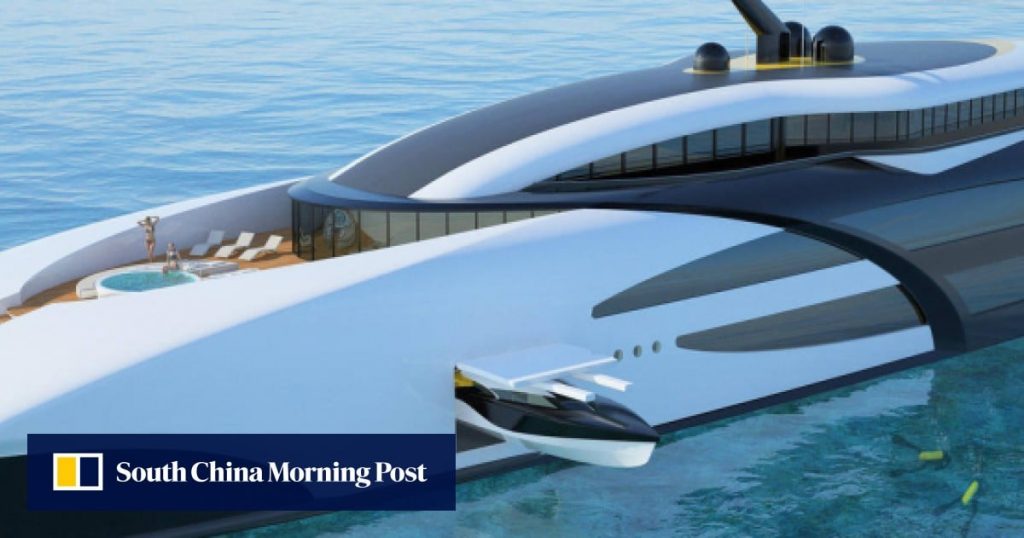
This image is property of cdn.i-scmp.com.
Biometric Authentication
Biometric authentication is a cutting-edge security measure that utilizes unique physical or behavioral characteristics to verify the identity of individuals. Super yachts often employ biometric authentication methods to ensure that only authorized personnel can access restricted areas or sensitive systems.
Fingerprint Scanners
Fingerprint scanners are one of the most commonly used biometric authentication methods on super yachts. These scanners capture and analyze the unique patterns of ridges and valleys on an individual’s fingertip. When a fingerprint is scanned, it is compared to a pre-registered database of authorized fingerprints. If a match is found, the person is granted access. Fingerprint scanners are highly reliable and provide a quick and convenient way to authenticate individuals.
Facial Recognition Systems
Facial recognition systems are another popular biometric authentication method on super yachts. These systems use advanced algorithms to analyze and compare an individual’s facial features, such as the distance between the eyes or the shape of the nose. When a person’s face is scanned, it is compared to a database of authorized faces. If a match is found, access is granted. Facial recognition systems offer a contactless and non-intrusive way of authentication, making them increasingly popular in yacht security.
Safe Rooms and Panic Buttons
Safe rooms and panic buttons provide additional layers of security and immediate assistance in emergency situations on super yachts. These measures are designed to ensure the safety of individuals on board and provide a means of communication and protection when faced with a potential threat.
Secure Locations for Emergencies
Safe rooms are specially designed areas of a super yacht that are secured and fortified to withstand various threats, such as intrusion, theft, or hostile acts. These rooms are equipped with reinforced doors, communication devices, vital supplies, and emergency escape routes. In the event of an emergency, individuals can seek refuge in the safe room until help arrives or the threat is neutralized.
Panic Buttons for Immediate Assistance
Panic buttons are discreetly placed throughout the vessel and can be easily triggered in case of an emergency. When activated, the panic button sends an immediate notification to the crew or security personnel, alerting them to the fact that assistance is required. Panic buttons are particularly useful in situations where individuals may be unable to communicate verbally or when a quick response is crucial.

This image is property of cdn.i-scmp.com.
Tracking Systems
Tracking systems are used to monitor the location and movements of super yachts. These systems provide real-time information about the vessel’s position, speed, and course, allowing for effective navigation and ensuring the safety of those on board.
GPS Tracking
GPS tracking is a widely used technology in the maritime industry. Super yachts are equipped with GPS devices that receive signals from satellites to determine their precise location. This information is then relayed to a tracking system, which can be accessed by the captain, owner, or designated individuals. GPS tracking systems not only provide accurate position data but can also provide alerts in case of deviation from pre-determined routes or entry into restricted areas.
AIS Tracking
Automatic Identification System (AIS) tracking is another method used to monitor the movement of super yachts. AIS transponders are installed on vessels and broadcast information, such as the vessel’s identity, position, speed, and course, to nearby vessels and land-based receivers. This information can be accessed by authorized parties, allowing for enhanced situational awareness and improved safety at sea. AIS tracking is mandatory for larger vessels and is increasingly being adopted by the luxury yachting industry.
Secure Communication
Secure communication is essential for maintaining privacy and confidentiality on super yachts. These measures ensure that sensitive information and conversations remain protected from eavesdropping or interception.
Encrypted Data Communication
Super yachts employ encrypted data communication systems to secure communications between individuals on board the vessel and external parties. Encryption algorithms are used to convert the information into ciphertext, which can only be deciphered with the appropriate decryption key. This ensures that even if the data is intercepted, it remains unreadable and secure. Encrypted communication systems include secure messaging apps, encrypted email services, and virtual private networks (VPNs).
Secure Satellite Phones
Satellite phones are commonly used on super yachts to maintain communication when traditional cellular networks are unavailable. To ensure secure communication, satellite phones are equipped with encryption capabilities. This prevents unauthorized interception of voice calls, text messages, and data transfers. Secure satellite phones utilize advanced encryption protocols, such as AES or RSA, to safeguard communication.
This image is property of www.filepicker.io.
Fire Suppression Systems
Fire accidents can pose a significant risk on board a super yacht. Fire suppression systems are employed to detect and extinguish fires quickly, minimizing damage and ensuring the safety of those on board.
Automatic Fire Suppression Systems
Automatic fire suppression systems are installed in various areas of a super yacht, including engine rooms, electrical equipment compartments, and other vulnerable spaces. These systems typically utilize gas or foam to suppress fires, as they are effective in quickly extinguishing flames without causing further damage. The systems are designed to detect smoke or heat and automatically release the extinguishing agent, suffocating the fire and preventing its spread.
Smoke and Heat Detectors
Smoke and heat detectors are strategically placed throughout the vessel to provide early detection of fire. These detectors can sense the presence of smoke particles or a temperature increase, triggering an alarm system. The alarm alerts the crew and passengers to the potential fire, allowing for immediate action. Smoke and heat detectors can be connected to the super yacht’s fire alarm system, ensuring a coordinated response to any fire incident.
Privacy Measures
Privacy is of utmost importance on a super yacht, and various measures are in place to ensure that individuals on board can enjoy their time without being intruded upon.
Tinted Windows and Curtains
Tinted windows and curtains are commonly used to provide privacy and prevent outsiders from looking into the yacht’s interior. These measures not only offer privacy during the day but also provide security by obscuring the view of valuable assets or activities taking place inside the vessel. The window tinting can also help regulate the temperature and reduce glare from the sun.
Privacy Zones
Privacy zones are designated areas on a super yacht where guests or individuals can enjoy their time without being disturbed. These zones can include private staterooms, outdoor lounges, or exclusive areas of the yacht reserved for specific individuals. Privacy zones are typically monitored by security personnel to ensure that only authorized individuals have access.
Acoustic Insulation
Acoustic insulation is used to minimize noise pollution both inside and outside the super yacht. This measure helps to maintain the privacy of those on board by reducing the transmission of sound. Acoustic insulation materials are integrated into the yacht’s construction, including walls, floors, and ceilings. They are designed to absorb or block sound waves, preventing them from traveling between different areas of the vessel. Acoustic insulation also enhances comfort and tranquility on board by reducing the impact of noise from various sources, such as engines, waves, or external noise.
In conclusion, super yachts employ a wide range of high-tech security and privacy measures to ensure the safety and well-being of those on board. From advanced surveillance cameras and intrusion detection systems to biometric authentication and tracking systems, these measures work together to provide comprehensive security and peace of mind. Additionally, cybersecurity measures, safe rooms, panic buttons, secure communication, fire suppression systems, and privacy measures are all integral components of a holistic security approach on a super yacht. By implementing these measures, super yacht owners can maintain a safe and secure environment for their guests, ensuring a luxurious and worry-free experience at sea.
